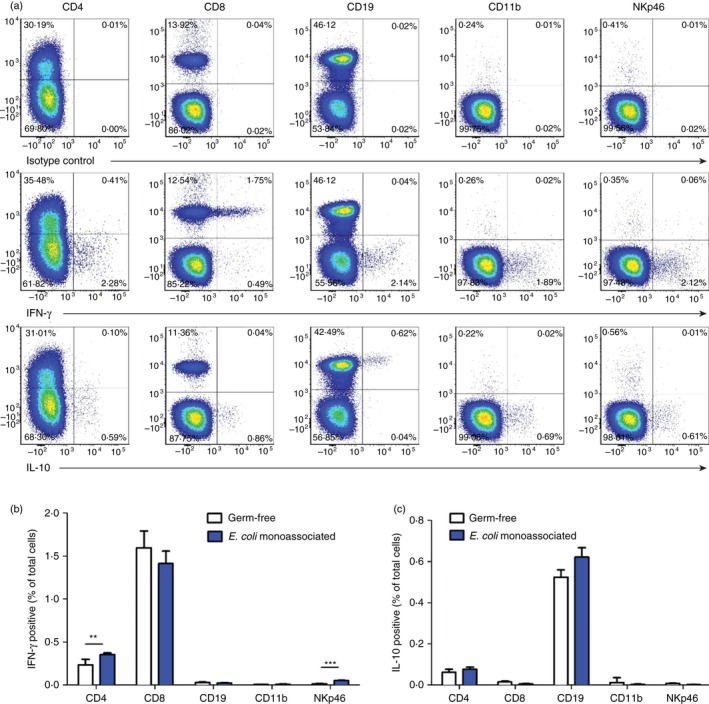Figure 5.

Cell types that produce interferon‐γ (IFN‐γ) and interleukin‐10 (IL‐10). Unseparated mesenteric lymph node (MLN) cells from 129SvEv wild‐type (WT) mice monoassociated with Escherichia coli NC101 for 4 days or from 129SvEv WT germ‐free (GF) mice were stimulated overnight with 10 μg/ml E. coli NC101 lysate, followed by 5 hr with ionomycin plus PMA. Golgi stop was added during the last 4 hr. (a) Representative flow cytometry plots showing IFN‐γ‐ or IL‐10‐producing CD4, CD8, CD19, CD11b and NKp46 cells in MLN from E. coli monoassociated mice, (b) mean percent (minus mean percent isotype control) ± SEM of IFN‐γ‐positive MLN cells from GF mice (n = 6) or E. coli monoassociated mice (n = 4), (c) mean percent (minus mean percent isotype control) ± SEM of IL‐10‐positive MLN cells from GF mice or E. coli monoassociated mice. All four E. coli monoassociated mice were evaluated in one experiment, representative of three separate experiments. The six GF mice were evaluated in two separate experiments, three mice in each. Data were analysed by unpaired Student's t‐test. Asterisks indicate statistically significant differences. **P < 0·01, ***P < 0·001. No significant differences were observed for IL‐10 detection in any of the cell types evaluated.
